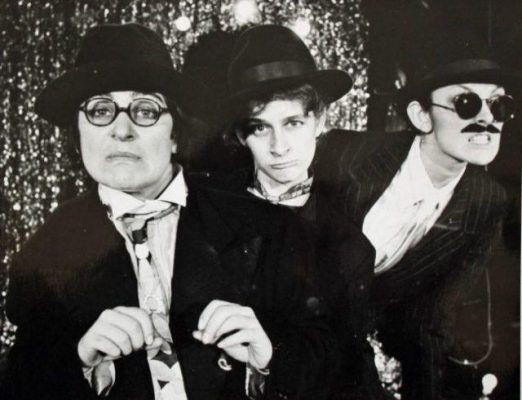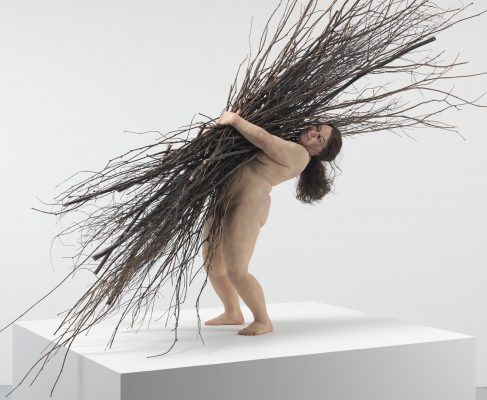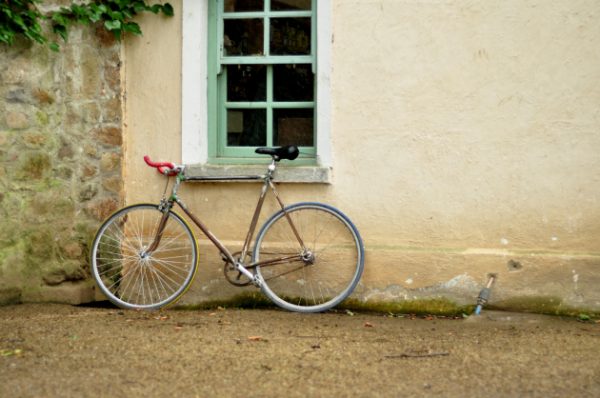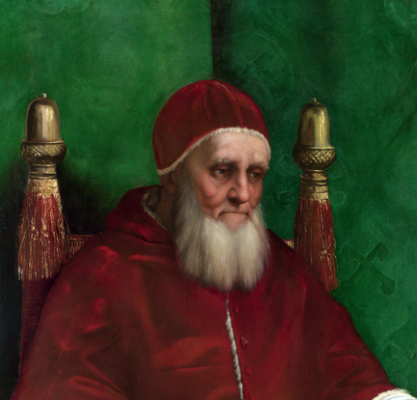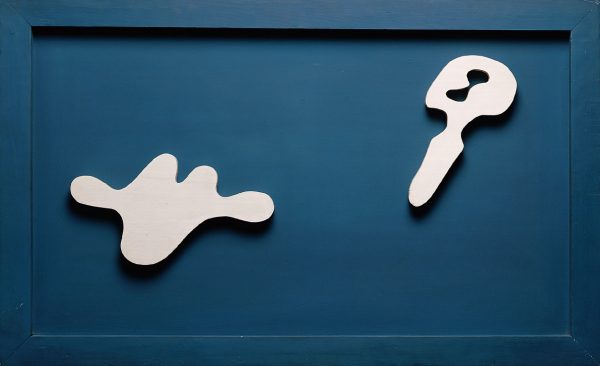‘What’s the difference between a policeman’s baton and a conjuror’s wand? One’s for stunning cunts and one’s for cunning stunts.’
– Anon
A very tall woman enters the floor. What strikes me is her height, her rangy, exposed limbs and her mercurial grin, among a procession of other women in droopy baby-grows exposing flesh, but not the way men like it. This troupe of female performers make entertainment from an altogether different proposition: a grotesqueness not normally associated with women. The audience is called to attention around a makeshift stage that is just the floor – of a hospital canteen, a village hall, a field – and what follows is an absurdist’s dream.
I wasn’t there but I imagine it through the material residue of photographs, flyers, newspaper cuttings and the immaterial traces of memories, feelings and stories – an archive not yet fleshed into a body, through which her body returns to me now.
At over six foot, Jan Dungey was conspicuous – a performer, singer, community arts bastion and my late godmother. Along with Iris Walton, she founded and performed in the all-female theatre troupe Cunning Stunts, whose aim was to ‘display the absurdity of male behaviour and to present women alone being funny and flouting the prevailing glamorous image of women as entertainers’, as they told The Leveller‘s Lloyd Trott in 1980.
Women alone or apart from men, women together being funny. Cunning Stunts performed a heady combination of cabaret, slapstick, clowning and political theatre – ‘as women we were breaking boundaries’, surviving member Plume Tarrant explains by email. The troupe shifted in formation and structure to include Plume, Gill Cappa, Erin Steel, Debbie Hall and Margo Random, but at its core was the double act of Iris Walton and Jan Dungey. It was Iris who had trained in theatre. She had run away to Paris at 15, where she was taught mime by the avant-garde actors Étienne Decroux and Jacques LeCoqs. Small, wily and acrobatic, Iris flew across the stage, while a loping Jan stayed close to the ground. Their physical distinctions were played up for comic value. Retaliating against typecast women within the entertainment industry, the Stunts emboldened the bits of themselves they didn’t like (too tall, too short, stocky thighs) and incorporated them into the act.
One bright, beautiful winter’s day this January, Jan’s body came to rest. I fill the hollow space of grief and loss with things I didn’t know about her. I gather up scraps and traces of her life, ephemeral material and memories belonging to two of the surviving Stunts – Iris and Plume – who speak to me from disparate places across the UK, with Jan as our point of orientation.
Jan Dungey met Iris Walton around 1976 in a squat in Hampstead, where Jan was living and where Iris was rehearsing with the Still Life Mime Theatre Group, which she had set up in 1975 and taken to Edinburgh Festival that same year. Jan soon joined Still Life, and together with Iris’s partner Ross Foley and Jan’s partner Simon Prager, it evolved into a new company, Cunning Stunts, with Jan lifting the name from that old joke about the conjurer’s wand. The Stunts were not, at first, explicitly feminist or exclusively female; alongside male partners, their friend Andrew Haig designed the audacious promotional material. For a performance titled ‘Farmer-Cutie-Gals Spare Part Works’ (1978), which later became ‘Ham Fat on the Turn’, Haig illustrated a line of staunch pink legs – part butcher’s shop and part cabaret chorus, parading in unison across the flyer, while a leering man gropes for them from the darkness.
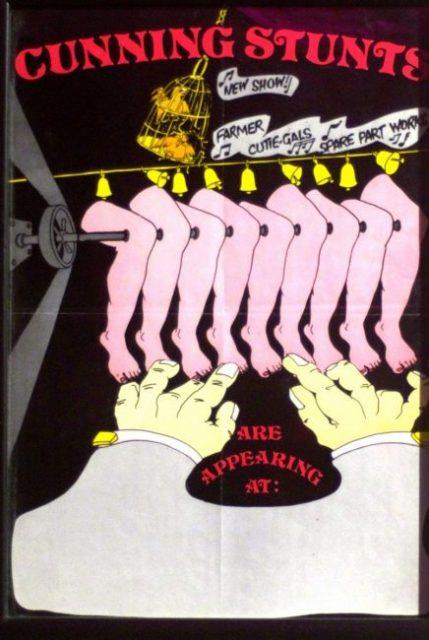
Over the next few years of performing and touring, and ‘realising just how under-represented women’s humour was in the theatre’, the Stunts’ politics became more explicit. Jan had previously worked with Chiswick Women’s Aid and in prisons, and was cognisant that women were under-represented, but ‘it was only slowly that the more political idea of being women came in’ to the work, Iris explained.
Cunning Stunts’ approach was accumulative – excessive to the point of eruption – and the structure this excess aimed to abrade was the patriarchy. During our conversations in March this year, Iris described the Stunts as ‘wild’. Their lewd name play, ill-fitting costumes, homemade props and hammy movement elicited controversy and success. Performances followed a loose structure, beginning with an opening number or dance routine, described by Iris as ‘madness walkabouts’, in which the Stunts liked to upstage and surprise each other. Rehearsing involved voice work, strengthening and training, says Plume, followed by discussions, ‘sitting around, figuring out what was useful and honing it into performance styles.’
From 1977 to 1982, Cunning Stunts rallied against the glamorous female entertainer, a fading Fifties pin-up in a landscape of women’s consciousness raising, the circulation of Simone de Beauvoir and the emergence of feminist art practices on both sides of the Atlantic. Artists like Rose English, dancer Jacky Lansley (who Iris shared childcare with, and sometimes a stage) and filmmaker Sally Potter were creating site-specific performances and gallery interventions; in New York, Rosemary Mayer was building durational and commemorative ‘temporary monuments’ while in Brazil Lygia Clark explored the body through participatory performances.
Cunning Stunts inhabited community spaces and infrastructures of care, such as hospitals and youth aid units. Funded by the Arts Council and existing largely outside the gallery context, they performed at North London Psychiatric Unit, North East London Polytechnic, Women’s Open Prison, Peckham Social Services Benefit, Lewisham Youth Aid, as well as The Royal Court Theatre, Southbank Centre and in Germany, Italy, Austria. They went where laughter was needed. What emerged was a performance style that fused alternative and community theatre, comedy and activism. Iris remembers going into a women’s open prison in 1979, where they ‘restaged’ The Odyssey – ‘we’d eat a banana with it sideways in our mouths and throw the banana skins into the audience, and afterwards we discovered that the women prisoners were collecting them to smoke and get high. We got into trouble a lot,’ Iris adds. I imagine Jan and Iris with their mouths forced into wide banana grins, inciting laughter and infectious rebellion. The performance was emancipatory in its reimagining of Homer’s heroic narrative, but also, incidentally, for the audience who were seeking escape – theatrical or chemical – from the gruelling experience of prison life.
Around the same time, but within an altogether different context, Swiss artist Heidi Bucher acted ‘upon and against the architecture’ of patriarchal structures through her latex skinnings of rooms, painting their interiors with latex before laboriously peeling it off. Like the Stunts, Bucher acted upon and performed in institutional structures, occupying a former sanitarium on Lake Magiorre, the oppressive dining room of her old familial home or the office in which Freud treated the hysteria patient Anna O. Just as Bucher symbolically cast and then shed the institutional structures that hold us, the Stunts shed the narrative ones. In their version of The Odyssey, heroes and Olympian gods are performed by women in spandex leotards, with Iris as a Glaswegian Odysseus and Jan as the Cyclops. The cast made the narrative bend to their own specialisms and accrued new ones, all of them turning their hand to brass instruments for the show.
The Stunts stretched their repertoire to include ‘animals, birds, insects, tea bags, goddesses and gods, winged messengers, a compost heap’, despite, or perhaps because of, their lack of diversity as performers (‘we were all white women’, says Plume). Realism was engulfed by an absurdist fiction that intended to expose the mechanics of their labour and supposed inadequacies. They appeared not as glossy ideals but real women – wives, partners, mothers, daughters, for whom touring in a converted ambulance, sometimes with children in tow, blurred the parameters of life and work. Before 1980, when Di Robson was appointed as an administrator and Jan was made producer, all members were expected to perform all roles, including costume and set making, flyering and programming. Iris says it was important to expose the lived realities of women in their practice – an aim that reflected Jan and Plume’s broader interest in alternative models of living, such as housing co-ops and community habitation.
In 1983, the troupe met to devise their next show and, true to their style, spontaneously combusted – or harmoniously disbanded – to focus on child-raising and their diverging creative ambitions. Shortly afterward, Jan moved to Suffolk in search of a new band of collaborators, creating a rural practice steeped in her versions of ancient rites and rituals. In time she partnered with my mother and began her next performative venture under the fitting title Company of Imagination. Diagnosed with multiple sclerosis at the age of 45, Jan’s health deteriorated and she was left bed-bound for almost a decade, until she developed COVID and passed away.
The ‘contemporary afterlife’ in performance is what remains after the event, says art historian Anna Janevski – not only its material documentation but the immaterial traces of memories and stories surrounding it. What if the event is a life? What kind of residue, like a stain, did Jan leave in my mind, and the minds of her audience? A resounding memory, Iris tells me, is of Jan as a spider, wearing tap shoes, her inordinately long limbs thrown over her shoulders, making her contorted and absurd. Plume sends me a scanned copy of the programme cover for the Festival of Fools in Amsterdam in 1979, where Jan appears again squat and close to the floor, crossing her eyes, pinching her mouth, clad in a balaclava and something leopard print, breaking a stick over her thigh and surrounded by unapologetic vermillion typography.
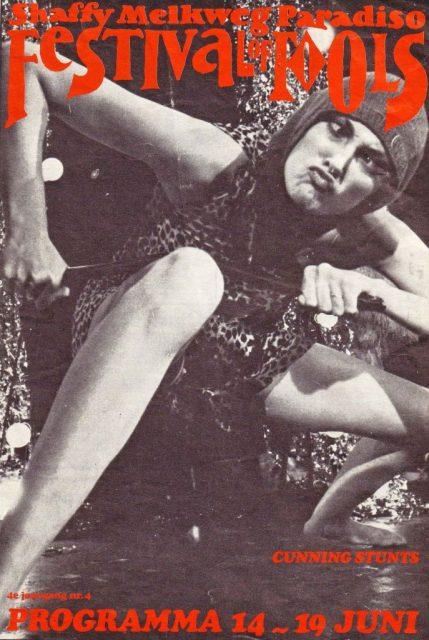
How to position those that refuse to sit still, how to make audible a cacophony? Unwieldy in form and aesthetic, shifting context and performative mode, Cunning Stunts were not easy to catalogue within an art or performative historicisation. This means that despite their prolific and rousing work there isn’t an archive so to speak, and nor do I wish to order the disorder. But in spending time with Jan’s ephemera, being in dialogue with Iris and Plume, I try to absorb the residual energy of the Stunts – the power of their humour despite, or because of, the fact there is so much at stake. And so I end where I began, with Jan’s lithe limbs, her mercurial grin, resolved as I am to honour her through the ‘contemporary afterlife’ of Cunning Stunts – a mere fraction of her life’s work. Together with the living Stunts, I conjure Jan from these shards of memories and fragments – spectres like stardust that litter the floor. The floor that is not a stage – the floor that is just a floor.
Images, in order of appearance:
Lead image: Cunning Stunts in Wish You Were Here, 1977, Left-right: Iris Walton, Rix Pyke and Jan Dungey.
1. Farmer-Cutie-Gals Spare Part Works poster designed for Cunning Stunts show by Andrew Haig, 1978. The title of the show was changed to Ham Fat on the Turn
2. Jan Dungey in Ham Fat on the Turn from Festival of Fools Amsterdam programme, 1978.
